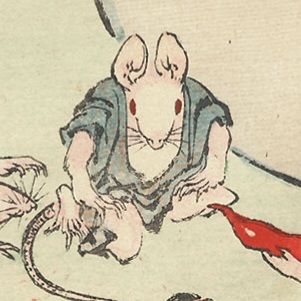I don’t tend to eat much fish, but in the supermarket earlier I saw some smoked salmon which didn’t need cooking, and some salmon fillets which did. They looked the same really - both ‘raw’. I decided to buy some of the fillet. It was nice, but a very different flavour from when I’ve tried smoked salmon in the past. The cooked fillet was quite chicken-y with a slight earthy/fishy taste, whereas smoked salmon has a very strong fish flavour.
Why do they taste so different? And why is smoked salmon safe to eat without cooking when other smoked fish do need cooking?
Low heat for long time = safe
High heat for short time = safe
High heat breaks down more compounds in meat and makes colors change
This really shouldn’t be the top rated comment. Cold smoked salmon is smoked at 15-25°C for about half a day. If temperature were the key, you would achieve the same effect by just placing it on the countertop overnight.
I didn’t realise how complex this was! So with hot smoked salmon, the temperature is hot enough to kill bacteria but not denature the protein (so it still looks ‘raw’). Cold smoked doesn’t cook the fish but imparts the smoky flavour, and it’s made safe to eat by other preservation methods? (as per @MargotRobbie@lemmy.world’s comment)
Well, smoking is a wide variety of processes and very food dependent, but hot smoked food is usually cooked. For example, if you buy Alaskan smoked salmon, they look cooked and a bit jerky like; similarly, for Texas style smoked briskets, the meat is cooked slowly over a couple of hours inside a smoker.
Maybe it would be easier to watch a video on cold smoked salmon to see how the process works.
Yes, @MargotRobbie@lemmy.world is correct (sorry, I haven’t figured out yet how to link usernames). Hot smoked food usually doesn’t keep for more than a few days, if that, because it is cooked. AFAIK, in cold smoking, the smoke itself even has a preserving effect because it kills surface bacteria and dehydrates the outer crust, but the fish is also salted or brined. As noted in other comments, there are a wide variety of different techniques. Note: I’m not an expert, so I may be off on the details. I just used to work next door to a smokery and chatted with the owners sometimes.
Oh don’t worry, you did it right!
It’s salmon, you can eat that thing raw if you like, like beef too, just that with salmon you have to fully freeze it once to kill potential parasite worms.
Safe is a spectrum, I suppose. I eat rare beef and runny eggs, but there’s always a safety warning at the bottom of the menu. Still, the level of “safe” is a function of both temperature and time, at least according to the USDA.
Runny eggs are normal eggs I think, who boils them to the full hardness?
I mean sure it’s raw beef, bacteria will love it but as long as it’s fresh and well handled it can totally be eaten raw, unlike pork or chicken for example. I don’t mean rare, I mean raw, fully uncooked. Steak Tartar or carpaccio for example, two absolutely delicious meals.According to my experience most people do like their eggs hardboiled. Personally I hate it, but I always have to specify and then I get hardboiled anyway.
Your and my threshold for acceptable risk seems to be similar. But we’re taking a risk. If you graph that risk, it lowers predictably based on time cooked, and the rate at which it lowers increases at higher temperatures. That was my only point, and I’m not sure if you’re disagreeing or just providing anecdotes and your preferences.
as long as it’s fresh and well handled it can totally be eaten raw, unlike pork or chicken for example.
Even those can be eaten raw in the right circumstances. Just ask a German for Mettbrötchen
That doesn’t apply if the temperature is below what’s needed to kill bacteria and cold smoked salmon is smoked at temperatures too low to kill bacteria. Smoking inhibits bacteria growth a bit, but it’s mostly the curing that does it, and neither kill bacteria, it just slows it and allows healthy bacteria to take hold.
There’s also hot smoked salmon which is low and slow and above kill temp, but that has a much more cooked texture so op is probably talking about cold smoking. Cold smoking is riskier to do at home for these reasons and store cold smoked salmon is carefully controlled.
So how does low heat kill bacteria and make it safe? Why do people generally cook smoked haddock but not smoked salmon - different bacteria?
The same ways extreme temperatures would kill you faster the more extreme they are.
I don’t know about the difference between those two fish, but I suspect it’s more to do with texture and flavor than safety.
Oh, with a knife. Got it.
This is correct generally but doesn’t apply in this case
Smoking is an ancient method of preserving food. It imparts a smoky flavor which many people enjoy (though some do not). The advantages of smoking vs cooking include being able to smoke large amounts of food efficiently using racks and potentially less and/or cheaper fuel, and greatly reduced risk of burning the food (or the racks, which may be made of wood in a primitive/camping context).
While smoked meats are what we often think of, many foods can be smoked including vegetables, herbs, spices, and almost anything if you like the flavor it imparts to the food.
Smoking does also cook the food, only slower. Also, some people do eat raw or undercooked meats as a culinary choice. It does increase the chances of acquiring food borne parasites if the meat is undercooked.
@Boozilla Smoked trout is the only trout based food I know that doesn’t smell like satan’s unwashed genitals.
Smoked salmon looks “raw” largely because it is raw. It has never been heated.
Smoking the fish does indeed give a very different flavour to non-smoked fillet. That shouldn’t be any great surprise.
Why is it safe? Well good quality raw salmon is also safe (see sushi). But the smoking does have an effect of preserving the fish and making it less of an environment where bacteria would thrive.
Smoked salmon looks “raw” largely because it is raw. It has never been heated.
I am curious about the process of smoking without heat.
I they’re referring to cold smoking. It’s just smoking at a temp of like 80 degrees for like 18 hours or something. It’s how you make lox.
Traditional lox is just brined in salt, no smoking.
Gravadlax is brined in salt and sugar with spices.
Smoked salmon is just smoked salmon, like nova, in the US.
Due to customer preference and lack of knowledge, most want smoked salmon when they ask for lox, so are sold lox.
Cold smoked salmon (such as nova lox) doesn’t look raw, it IS raw. The temperature of the fish never gets pass 37C.
Instead of killing bacteria via high temp via cooking, cold smoked food usually kills becterias by some other way like drying or brining first and the smoke is usually there to impart flavor only.
Cold smoked salmon which you’re referring to is not cooked, it’s cured and smoked at temperatures lower than cooking. There’s also hot smoked salmon which is still done at low temps but high enough to cook it so it kills bacteria but it does have a more cooked texture. The curing and smoking process of smoked salmon doesn’t really kill much bacteria, it mainly inhibits it by creating a hostile environment for bad bacteria and allows good bacteria to take hold. So the reason smoked salmon doesn’t have a cooked texture is because it isn’t really cooked.
If you cook it and it’s like chicken I would say it over cooked . I like to make sear it in a pan for a couple minutes and cover it in a maple sauce . Should be flakey and still pink inside for best results. That’s my opinion but I have no actually training.









